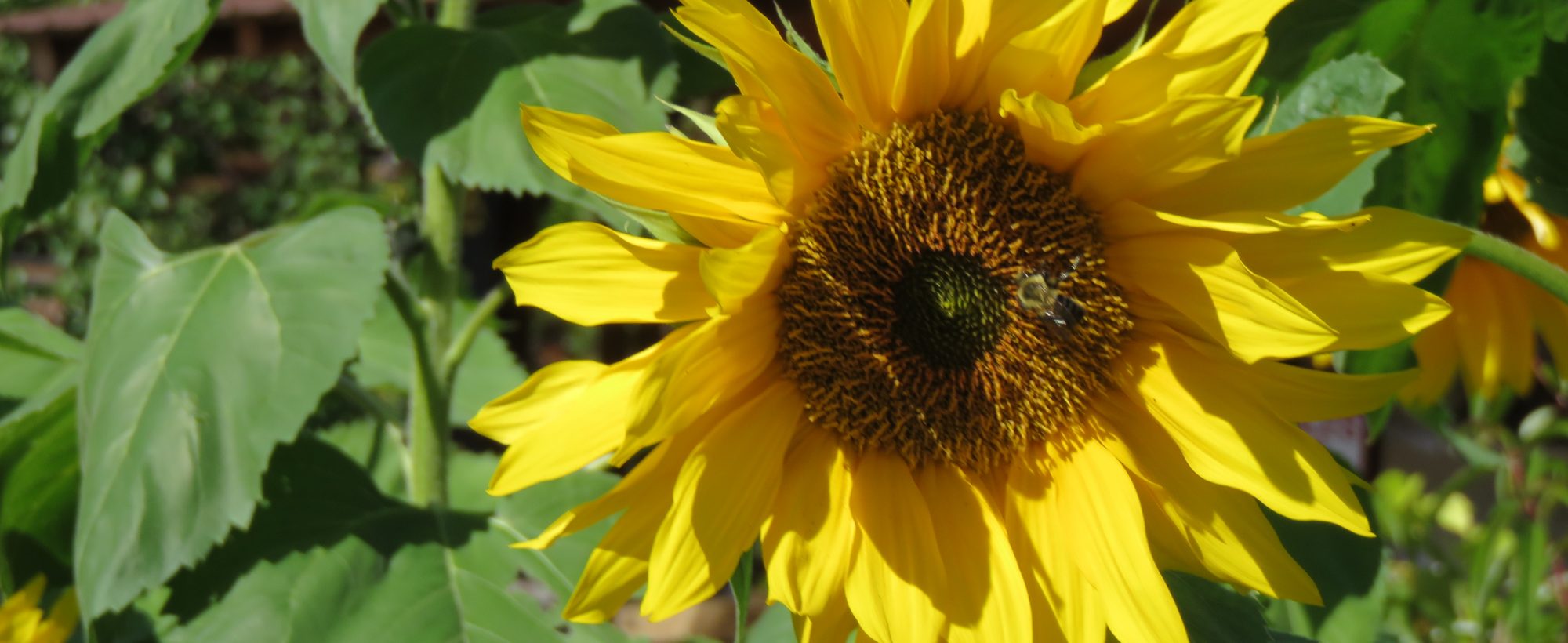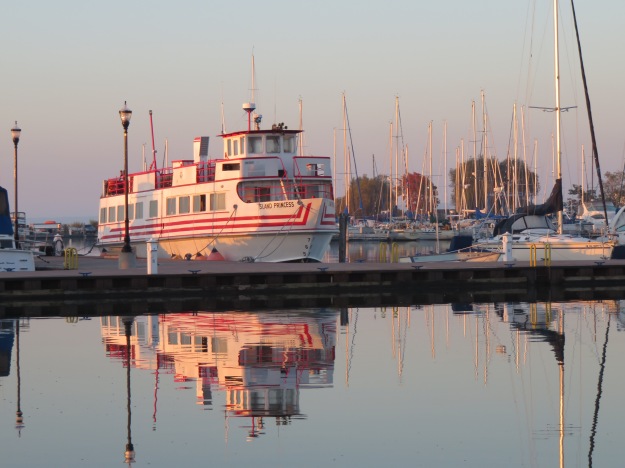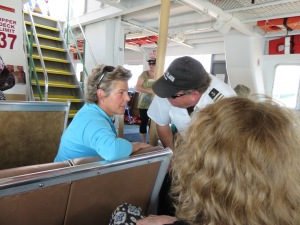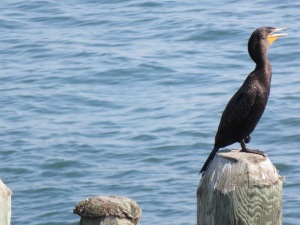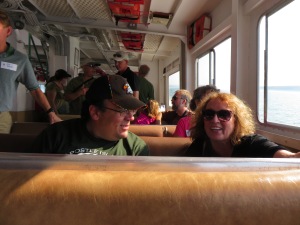It’s Saturday, September 27, and we are boating from Bayfield. I’ve never seen the Apostle Islands before, so I drove from Chicago to northern Wisconsin for this chance to have a cruise with fellow Sierra Club members and some knowledgeable speakers. It is a beautiful day to see the fall colors and the islands of Lake Superior.
The first speaker is Tia Nelson whose father Gaylord Nelson was a Wisconsin senator and governor. Nelson established Earth Day and his daughter is a conservationist, too. She explains how it wasn’t just her dad who created the Gaylord Nelson Wilderness Act fifty years ago. Many people worked together to protect this natural area. Now, with a colossal Gogebic Taconite (GTac) mine proposed for nearby Penokee Range that will pollute land, air, and water, Tia urges us to work together again to protect our resources that are not only aesthetically pleasing but vital to our existence.
There are about 136 passengers on board. We visit the snack table and talk with each other during our two-hour cruise. Devon Cupery tells me about the film she produced about the mine issue. Neil Howk, a park ranger with the Apostle Islands National Lakeshore, describes each of the islands we pass. All but one (Madeline Island) of the 22 islands are part of our National Park system, so they are no longer clear-cut for timber or quarried for brownstone but are left for wildlife and people to enjoy. The boat pauses by Raspberry Island so we can take pictures of its lighthouse.
The last speaker, Mike Wiggins, is a compelling storyteller, painting a broad, almost mythical picture of the issues at hand. I stop taking photos out the window of the boat and listen to him talk about protecting this rich land of fresh water, forests, and wildlife. Mike is Chair of the Bad River Band of Lake Superior Ojibwe whose 125,000 acres of reservation would be hugely impacted by the taconite mine. Their wild rice beds and Lake Superior itself, the holder of 10% of the world’s surface fresh water, would be polluted by mercury and other run-off from the mining process. Chris Cline of GTac and the governor of the state eliminated laws and rules regulating the disposal of toxic mine wastes, following Cline’s pattern of destruction in other states and countries.
Mike calls Cline a windigo, a ravenous giant from Ojibwe tales. He always wants more. “Chris Cline is so hungry, he ate the state of West Virgina! After he ruined that place, he took bites out of Illinois and now he’s coming for Wisconsin,” Mike says, explaining that windigo is the spirit of excess and can be vanquished by the powers of love and cooperation for the greater good. Both humans and Mother Earth, he says, are endowed with an energy from the Creator, and when we call on that, there will be no mine. Mike and the other speakers are role models for challenging the motives of greed and profit. We can do better, they tell us.
I remember the Gordon Lightfoot song about the SS Edmund Fitzgerald. The 29 lives on board that Great Lakes ship were lost partly due to greed. The Fitzgerald was carrying 4000 tons more taconite iron ore than it was designed to hold, making it hard to maneuver when pounded by waves in a storm. It sank in Lake Superior in 1975. As the lyrics go, “That good ship and true was a bone to be chewed/ When the gales of November came early.”
Will our natural resources be chewed to the bone by storms of windigos? As Tia Nelson said, it’s up to us to appreciate and protect what we have. And on this September day, what we have is spectacular.
